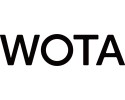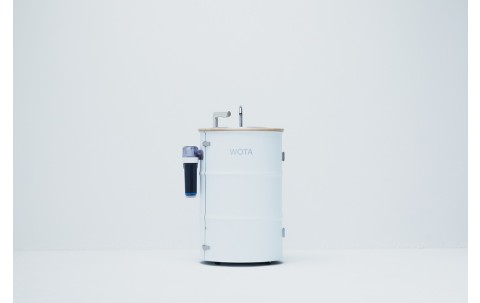Water Reuse Hand-wash Stand "WOSH"
Technology / Service Summary
WOSH is a water-recycling hand-wash stand that reuses over 98% of its water. It can be set up anywhere, even without a water supply, and just 20 liters allows for over 500 washes. Operating independently of infrastructure, WOSH is fully functional in both normal and emergency situations with a power source. Its unique treatment process uses two activated carbon filters, an RO membrane, and a filter 1/100th the size of a virus to remove impurities and viruses. Deep ultraviolet irradiation and chlorine disinfection further purify the water. Multiple IoT sensors constantly monitor water quality, ensuring it meets WHO guidelines.
Purpose
Even in environments where stable water supply is difficult to secure, it aims to maintain hygienic conditions by providing continuous handwashing opportunities using only limited water resources, thereby freeing people from the constraints of conventional water infrastructure.
Feature
◆Hand-wash stand that reuse water
Technology that provides a constant supply of clean, safe water that complies with WHO drinking
water guidelines with only 20 liters.
◆Sterilize smartphones
Sterilizes at least 99.9% of bacteria and viruses on smartphones with deep ultraviolet (UVC) light.
◆Impact on Public Health
More than 3 million people have used WOSH since its launch. Widely introduced in large commercial facilities, restaurant chains, hospitals, etc.
◆Water quality control control with sensors
Multiple sensors constantly monitor and control water quality. Intelligent support of water purification process.
Effect
"WOSH" is a water recycling hand-wash stand that reuses more than 98% of the water it uses.
Set up is simple — even in places with no water supply. Just 20 liters is enough to wash more than 500 times and automatically sterilize your smartphone while washing your hands. WOSH operates independently of water infrastructure and remains fully functional in both normal and emergency situations, provided a power source is available. It has been installed in public and commercial facilities across Japan. During the 2024 Noto Peninsula Earthquake, approximately 200 units were deployed to six municipalities in Ishikawa Prefecture, where water outages persisted for an extended period. The units were utilized not only in evacuation centers but also in hospitals, nursing homes, and other facilities where maintaining sanitary conditions was particularly critical.
Controlled Substance
Reference
Applicable Regions / Countries
- Japan
Reference URL
Related SDGs Goals
- 6. Clean Water and Sanitation
- 7. Affordable and Clean Energy




